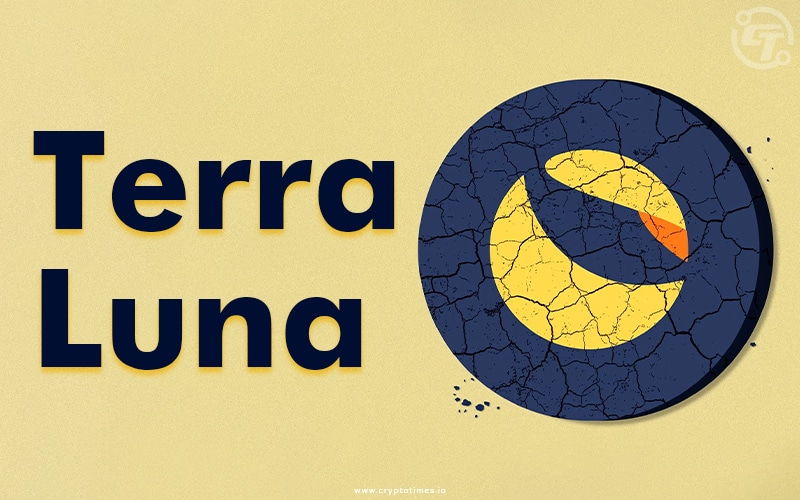It’s been a year since Terra Crashed; it serves as a stark reminder of the vulnerability inherent in the cryptocurrency market. The catastrophic event sent shockwaves through the crypto community, leaving investors reeling and prompting a collective reflection on the lessons to be learned.
This milestone prompts us to highlight the need for a deeper understanding of the crypto landscape and the measures required to navigate it successfully. In this article, we delve into the aftermath of the Terra crash, exploring the valuable insights gained from the experience and how they can shape our approach to cryptocurrency investments.
The Terra Crash: A Reminder of Market Vulnerability
It’s the first anniversary of the Terra Crash, which sent shockwaves through the cryptocurrency market, leaving a lasting impact on investors and serving as a cautionary tale for the industry as a whole. The crash resulted in a significant and rapid decline in the value of the Terra and Luna.
The Terra blockchain has a stablecoin named Terra USD (UST). UST was designed to maintain its 1:1 peg with the US dollar and was backed algorithmically by Terra’s native currency, Luna. But in early 2022, UST started to de-peg & we saw volatility in the stablecoin. A fateful run ensued on May 7, and within a few days, its value almost reached 0. It also led to the crash of the LUNA token and obliterated a colossal $50 billion in market value.
The repercussions of Terra Crash echoed across the crypto realm, leaving us pondering the intricate mechanisms and safeguards crucial to secure stability in the ever-evolving crypto landscape.
Effect of Terra Crash on the Crypto Community:
The Terra crash profoundly impacted the crypto community, reverberating throughout the industry and leaving a lasting impression on market participants, investors, and stakeholders.
The crash sparked panic in the market. Even the price of Bitcoin fell to $20k from $40k. The impact of Terra’s crash extends beyond the realm of Bitcoin, exerting a profound influence on the thriving DeFi ecosystem.
The catastrophic plunge in Terra’s native tokens has unleashed a devastating blow, eradicating a staggering $30 billion in TVL from the Terra blockchain alone in 10 days. Also, nearly $100 billion in TVL evaporated across multiple blockchains between May 9, 2022, and May 13, 2022.
The phenomenon also increased the scrutiny and called for regulations around Stablecoin and the crypto industry.
On the anniversary of the Terra Crash, which also caused the whole crypto market to crash, let’s remind ourselves of the five lessons we learned from this apocalypse.
Lessons to Learn From Terra Crash:
1. The Domino Effect is real
Crypto markets experienced a profound demonstration of the contagion effect in 2022, exemplified by the devastating collapse of Terra (LUNA) in May. The Terra crash is a reminder that no cryptocurrency operates in isolation.
Terra’s downfall directly affected several companies, such as Celsius, Three Arrows Capital (3AC), and Voyager Digital, which found themselves unfortunate casualties due to their substantial holdings of TerraUSD.
The downfall of its native tokens sent shockwaves through the broader crypto market. As one of the top 10 cryptocurrencies by market capitalization, Terra’s sudden decline eroded investor confidence in the project itself and sparked concerns and uncertainties among participants in the crypto ecosystem.
The Terra crash serves as a call to action for the crypto community to enhance resilience and fortify the ecosystem against the domino effect. Furthermore, it reinforces the need for continuous monitoring and effective risk mitigation measures.
2. Only Put in What You’re Willing to Lose
When investing in crypto, the golden rule stands strong: never invest the money you need. These investments are inherently high-risk and often exploratory. While the allure of substantial returns may be enticing, it’s crucial to acknowledge the possibility of collapse. Therefore, effective crypto investing heavily relies on skillful risk management.
A key aspect of risk management is ensuring that crypto investments constitute only a tiny portion of your overall investment portfolio. The art of successful crypto investing lies in striking a delicate balance between optimism and caution.
Remember, crypto investments are not a guaranteed pathway to riches. On the contrary, they are speculative by nature, and the potential for substantial gains comes with the possibility of significant losses. Therefore, it’s crucial to approach crypto investing with a realistic mindset, always considering the importance of risk management and the wise allocation of your financial resources.
In conclusion, the Terra crash reiterates the age-old wisdom of only putting in what you’re willing to lose.
3. No Crypto Project is Too Big To Fail (Diversify)
The Terra crash is a potent reminder that no crypto project is too big to fail. Moreover, it shattered any notion that prominent projects are immune to catastrophic setbacks.
Before the Terra crash, there may have been a perception that certain projects had reached a level of invincibility due to their size, market capitalization, or perceived stability. However, the events surrounding Terra shattered this illusion, revealing that no project is impervious to failure.
This sobering experience underscores the importance of conducting thorough due diligence and risk assessment before making investment decisions.
Furthermore, this realization highlights the significance of diversification in one’s crypto portfolio. Spreading investments across different projects and asset classes can help mitigate the impact of a single project’s failure. In addition, you can trade other cryptocurrencies using trading platforms like https://immediatetradepro.com/.
4. Stable Assets Require Stable Reserves
Stablecoins aim to combine the advantages of cryptocurrencies and traditional fiat currencies by offering decentralization and transaction speed alongside the stability of a pegged value.
The most successful stablecoins currently in use rely on more than just a fully decentralized model. For instance, Tether (USDT) backs its stablecoin with stable reserve assets like commercial paper and treasury bills.
On the other hand, TerraUSD took a different approach as an algorithmic stablecoin. Instead of being backed by traditional currency, it was programmatically backed by the cryptocurrency LUNA. This mechanism aimed to create arbitrage incentives and maintain the stablecoin’s value close to one dollar, similar to USDT.
However, unlike USDT, the underlying asset backing UST, namely LUNA, was less stable and liquid than actual dollars. Therefore, if a large number of UST holders were to redeem their tokens simultaneously, it could lead to a significant decline in the value of LUNA due to the sudden excess supply flooding the exchanges.
Unfortunately, this happened in 2022 when wealthy UST holders initiated a short attack against the stablecoin, which led to the crash of LUNA.
A possible way to avoid the Luna crash was if UST had more liquid backing and stable assets to withstand pressure and maintain its value in a deeper market.
5. Leverage with Caution (Risk versus Reward)
In the fast-paced world of crypto trading, many investors are enticed by the prospect of amplifying their profits through margin trading and leverage. While it may seem like a pathway to exponential gains, exercising caution and avoiding overextending yourself in pursuing riches is crucial.
Over-leveraging can leave you vulnerable to sudden market events, capable of obliterating your entire trading account. It is one of the leading causes behind the downfall of countless traders.
Maintaining a balanced approach to leverage is essential. While it can enhance potential returns, it also magnifies potential losses. The key lies in finding the right balance that aligns with your risk tolerance and financial capabilities. By avoiding excessive leverage, you’ll safeguard yourself against the treacherous downside of the market, fortifying your portfolio against unexpected upheavals.
Conclusion:
The Terra crash is a valuable lesson for both new and seasoned investors. It underscores the importance of DYOR principles, diversifying portfolios, and maintaining a disciplined approach to risk management. While the crypto market offers exciting opportunities, it is essential to approach it with a prudent and measured mindset, ensuring that investments align with personal risk tolerance and financial goals.
Savvy investors know that in the unpredictable world of crypto, you hope for the best and prepare for the worst. This approach strikes a delicate balance in the knife-edge slope that can be crypto profitability and loss. Industry players must take stock of last year and apply those lessons for the future.







